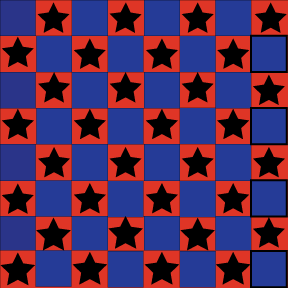
Terrill Crawford
Principles of Visual Design
1. Balance - is the distribution of the visual weight of objects, colors, texture, and space. If the design was a scale, these elements should bebalanced to make a design feel stable
2. Variety - to change the character" of an element, to make it different. Varietyis the complement to unity and is needed to create visual interest. Without unity, an image is chaotic and "unreadable;" withoutvariety it is dull and uninteresting.
3. Harmony - in visualdesign means all parts of the visual image relate to and complement each other. Harmony pulls the pieces of a visual image together. Harmony can be achieved through repetition and rhythm.
4. Emphasis - is defined as an area or object within the artwork that draws attention and becomes a focal point. Subordination is defined as minimizing or toning down other compositional elements in order to bring attention to the focal point.
5. Proportion - refers to the relative size of parts of a whole (elements within an object). We often think of porportions in terms of size relationships within the human body.
6. Pattern - is an underlying structure that organizes surfaces or structures in a consistent, regular manner. Pattern can be described as a repeating unit of shape or form, but it can also be thought of as the "skeleton" that organizes the parts of a composition.
7. Movement - Motion ormovement in a visual image occurs when objects seem to be moving in a visual image. Movement in a visual image comes from the kinds of shapes, forms, lines, and curves that are used. Diagonal lines tend to create the illusion of movement or motion.
8. Rhythm - is rhythm you receive through your eyes rather than your ears. Visual Rhythm is created by repeated positive shapes separated by negative spaces. Regular Rhythms and patterns have identical motifs or visual beats. They have an equal amount of space between motifs.







